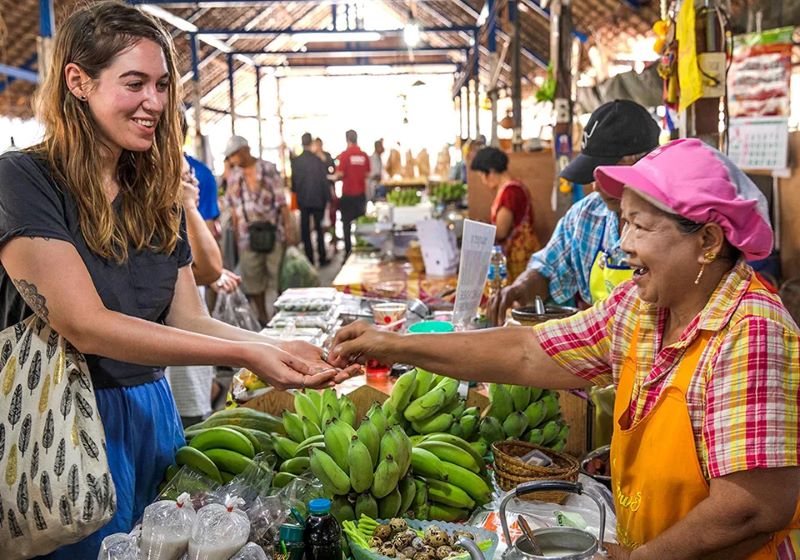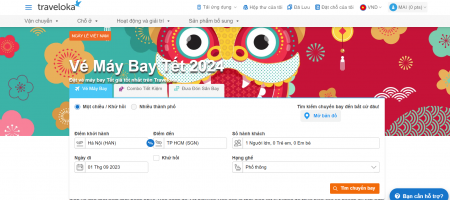Hà Giang, the northernmost region of Vietnam, is known for its magnificent landscapes, friendly people, and unique culture, making it an ideal destination for both domestic and international tourists. When traveling to Hà Giang, you will have the opportunity to purchase unique traditional handicrafts, delicious local specialties, and create unforgettable memories. However, to get reasonable prices, you need to know how to bargain. In this article, Meditours Ha Giang will share some effective bargaining tips for foreign tourists when shopping in Hà Giang, helping you to buy your desired products at the best prices.
Find out prices
Before you start bargaining, you need to research the market price of the product you want to buy. This helps you get a reference price and avoid being overcharged. You can check prices from other tourists, local residents, or travel websites. Additionally, keep in mind that prices in tourist areas are often higher than in other areas.
If you can find a local friend to take you shopping, this will help you save a lot of money. They can help you negotiate and get the best price. If not, you can try visiting different stores to compare prices and find a reasonable price.
Moreover, you should also be cautious of products sold at street stalls. Typically, the prices of these products will be higher than those sold in stores. Therefore, if you want to buy goods at better prices, go to the stores.

Start bargaining for low prices
When you start bargaining, you should offer a price that’s about 50% lower than the seller’s initial price. This creates a gap for both parties to negotiate. However, make sure your price is still reasonable and shows respect to the seller. For example, if the seller offers a price of 100,000 VND for a brocade scarf, you can suggest buying it for 50,000 VND.
If you don’t know the exact price, ask the seller for the price before making your offer. This helps you propose a reasonable price and avoid a significant discrepancy from the actual price.
If the seller doesn’t agree with your price and is very firm, don’t hesitate to pay a higher price. If you are patient and not in a hurry, you might find another seller who agrees with your price, or the initial seller may agree to lower the price when you return.
Show hesitation when buying
After quoting your initial price, you should show some hesitation. This gives the seller a chance to offer their best price. If the seller does not accept your price, appear indifferent and be prepared to walk away. Often, when you start to leave, the seller will agree to your price or use tactics to entice you to stay and make a purchase. If you want to buy at the best price, be patient and not too aggressive in negotiations. You can come back later or visit other shops to compare prices.
Bargain for each item
To avoid overpaying at the market, you should negotiate the price of each item individually instead of buying multiple products at once. This approach allows you to negotiate a better price for each item you are genuinely interested in or need. When you buy many products at once, you won’t have much leverage to ask for a discount and may end up spending more money unnecessarily.
Additionally, by bargaining for each item separately, you can check the quality and size of the products before deciding to purchase. This helps you avoid situations where you might end up with poor quality items or products that do not meet your needs.
Use body language
Body language is also very important in the bargaining process. The way you stand, your hand gestures, and facial expressions can affect price negotiations. Show confidence but don’t be too impulsive. If you are too impulsive, the seller will think that you need the product and it will be difficult to get a discount.
If you can, try using the body language of the locals to attract the seller’s attention. This makes it easier for you to negotiate the price.

Prepare to go if you can’t bargain
If after many negotiations you still cannot reach the desired price, you can prepare to leave and look for another place or come back another time. If you are about to leave, the seller may feel remorse and agree to your price to avoid losing a customer. However, be cautious when using this tactic; only use it if you truly no longer wish to purchase the product.
Bring cash
When bargaining in Hà Giang, carrying cash is essential. Traditionally, locals in Hà Giang do not accept credit card payments or other forms of payment. Having cash on hand makes negotiating easier and helps the seller trust your ability to pay.
Additionally, when shopping in Hà Giang, you need to bargain with many different vendors. Carrying various denominations of cash makes it easier to pay each vendor accurately.
Learn a few basic Vietnamese sentences
When bargaining in Hà Giang, knowing a few basic Vietnamese phrases will make it easier for you to negotiate prices. You can learn phrases such as “Bao nhiêu tiền?” or “Giá này đắt quá” to use during the bargaining process. Sellers will also feel happier seeing tourists make an effort to learn Vietnamese.
Conclude
Here are some effective bargaining tips for foreign tourists when shopping in Hà Giang. Besides researching prices and showing hesitation, being prepared and using body language are also very important in the bargaining process. We wish you a fun trip and hope you find satisfactory products at the best prices in Hà Giang. If you are looking for a reputable and affordable travel company in Vietnam, you can consider Meditours Ha Giang. This company is based in Hà Giang and has over 15 years of experience organizing tours in Hà Giang – Vietnam. By joining their tours, you will receive enthusiastic guidance, 24/7 support, and international-standard service quality. Click the following link for details: https://meditourshagiangloop.com/







